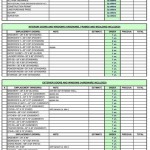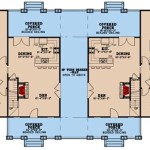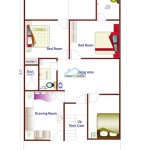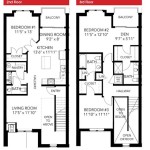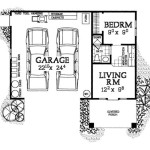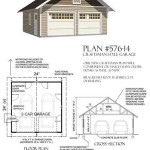Draw Your Own House Plan: A Comprehensive Guide
Creating a house plan is a fundamental step in the design and construction of a residential dwelling. While professional architectural services are often employed, individuals with a grasp of spatial reasoning, drafting principles, and building codes can successfully draft their own house plans. This approach offers significant cost savings and allows for unparalleled customization, ensuring the final structure aligns perfectly with personal needs and preferences.
Drawing your own house plan requires careful consideration of various factors, including site analysis, functional requirements, structural integrity, and regulatory compliance. The process begins with understanding the landscape, intended use of the space, and the local building codes that govern construction. Precision and attention to detail are paramount to avoid costly errors and ensure a safe and habitable structure.
Accuracy in creating a house plan is crucial. A poorly drawn plan can lead to miscalculations during construction, resulting in budget overruns, structural deficiencies, and potential safety hazards. Therefore, mastering the fundamentals of drafting and utilizing appropriate tools are essential for successful self-drafting. This includes understanding scales, dimensioning techniques, and the use of computer-aided design (CAD) software or traditional drafting methods.
Understanding the Initial Planning Phase
The initial planning phase is perhaps the most critical stage in drawing your own house plan. This phase involves a thorough assessment of the site, budgetary constraints, and design aspirations. A comprehensive understanding of these factors will directly influence the subsequent design choices and the overall feasibility of the project.
Site analysis involves examining the physical characteristics of the land where the house will be built. This includes determining the soil type, topography, orientation to the sun, prevailing winds, and any existing vegetation or structures. The soil type will influence foundation design, the topography will affect drainage and grading, and the orientation to the sun will impact energy efficiency and natural lighting. Existing vegetation might need to be removed or preserved, and any existing structures will need to be accounted for in the overall plan.
Budgetary constraints are a significant factor that will dictate the size, materials, and complexity of the house. Establishing a realistic budget early in the process will help to prioritize design features and prevent overspending. This involves researching the cost of materials, labor, and permits, as well as factoring in contingency funds for unforeseen expenses. A detailed budget spreadsheet can be a valuable tool for tracking expenses and making informed decisions.
Design aspirations refer to the intended use of the space and the desired aesthetic qualities of the house. This includes determining the number of bedrooms and bathrooms, the size and layout of the living areas, and any special features such as a home office, library, or entertainment room. Consider the lifestyle of the occupants and how the space will be used on a daily basis. Gather inspiration from architectural magazines, online resources, and existing houses to develop a clear vision of the desired outcome.
Methods and Tools for Creating House Plans
There are two primary methods for creating house plans: traditional drafting and computer-aided design (CAD). Traditional drafting involves using hand tools such as pencils, rulers, compasses, and drafting paper to create the plans. CAD software allows for digital creation and manipulation of the plans, offering greater precision and flexibility.
Traditional drafting requires a solid understanding of drafting principles, including scaling, dimensioning, and orthographic projection. It is a time-consuming process, but it can be a rewarding experience for those who enjoy working with their hands. The necessary tools include a drafting table, T-square, triangles, scales, compasses, erasers, and pencils of varying hardness. Accuracy is paramount, and errors can be difficult to correct.
CAD software offers a more efficient and versatile approach to creating house plans. Various CAD programs are available, ranging from free or low-cost options to professional-grade software used by architects and engineers. These programs allow users to create detailed plans with precise dimensions, including floor plans, elevations, sections, and 3D models. CAD software also facilitates collaboration and allows for easy modifications and revisions.
Regardless of the method chosen, it is essential to use accurate measuring tools and to adhere to established drafting standards. This includes using consistent scales, dimensioning conventions, and line weights. A clear and well-organized plan will be easier to understand and interpret by builders and contractors, reducing the likelihood of errors during construction.
For individuals new to drafting, it's advisable to start with simple projects and gradually increase the complexity as skills and confidence improve. Practicing with online tutorials and instructional books can provide a solid foundation in drafting principles and techniques. Consider taking a basic drafting course at a local community college or vocational school to gain hands-on experience and guidance from experienced instructors.
Essential Elements of a House Plan
A comprehensive house plan includes several essential elements that provide detailed information about the design and construction of the building. These elements typically include floor plans, elevations, sections, site plans, and details. Each element serves a specific purpose and contributes to the overall understanding of the project.
Floor plans are the most fundamental element of a house plan. They depict the layout of the rooms and spaces within the house, including the location of doors, windows, walls, and fixtures. Floor plans are drawn to scale and include dimensions for all rooms and features. They provide a bird's-eye view of the house and are essential for determining the flow of traffic and the functionality of the space.
Elevations are drawings that show the exterior views of the house from different angles. They depict the height, width, and style of the building, as well as the location of windows, doors, and other architectural features. Elevations are typically drawn for all four sides of the house and provide a visual representation of the finished product. They are essential for communicating the aesthetic qualities of the building and ensuring that it conforms to local design standards.
Sections are drawings that cut through the house vertically to reveal the interior construction details. They show the relationship between different floors, the height of the ceilings, and the construction of the walls, roof, and foundation. Sections are essential for understanding the structural integrity of the building and ensuring that it meets building code requirements. They also provide valuable information for builders and contractors during the construction process.
Site plans show the location of the house on the property, including the setbacks from property lines, the location of utilities, and any existing structures. Site plans are essential for obtaining building permits and ensuring that the house complies with local zoning regulations. They also provide information for grading, drainage, and landscaping.
Details are enlarged drawings that show specific construction elements in greater detail. These may include details of window and door frames, staircases, roofing systems, and other complex features. Details are essential for ensuring that these elements are constructed correctly and meet the required performance standards. They provide clear and concise instructions for builders and contractors.
In addition to these essential elements, a house plan may also include electrical plans, plumbing plans, and HVAC (heating, ventilation, and air conditioning) plans. These plans show the location of electrical outlets, switches, fixtures, and wiring; the location of plumbing pipes, fixtures, and drains; and the location of heating and cooling equipment, ducts, and vents. These plans are essential for ensuring that the house is properly equipped with essential utilities and that the systems are installed safely and efficiently.
Creating a complete and accurate house plan is a complex and time-consuming process. However, by understanding the essential elements and utilizing appropriate methods and tools, individuals can successfully draft their own house plans and create a home that meets their unique needs and aspirations. Remember to consult with local building codes and regulations to ensure compliance and to seek professional advice when needed.

Make Your Own Blueprint How To Draw Floor Plans

Make Your Own Blueprint How To Draw Floor Plans

Create Floor Plan

Floor Plan Creator And Designer Free Easy App

How To Draw A Floor Plan Live Home 3d

Floor Plan Creator And Designer Free Easy App

Design Your Own Home House Designing Homes

12 Examples Of Floor Plans With Dimensions

Be Your Own Floorplanner How To Draw House Plans Drawing Design Plan

2d Floor Plans


